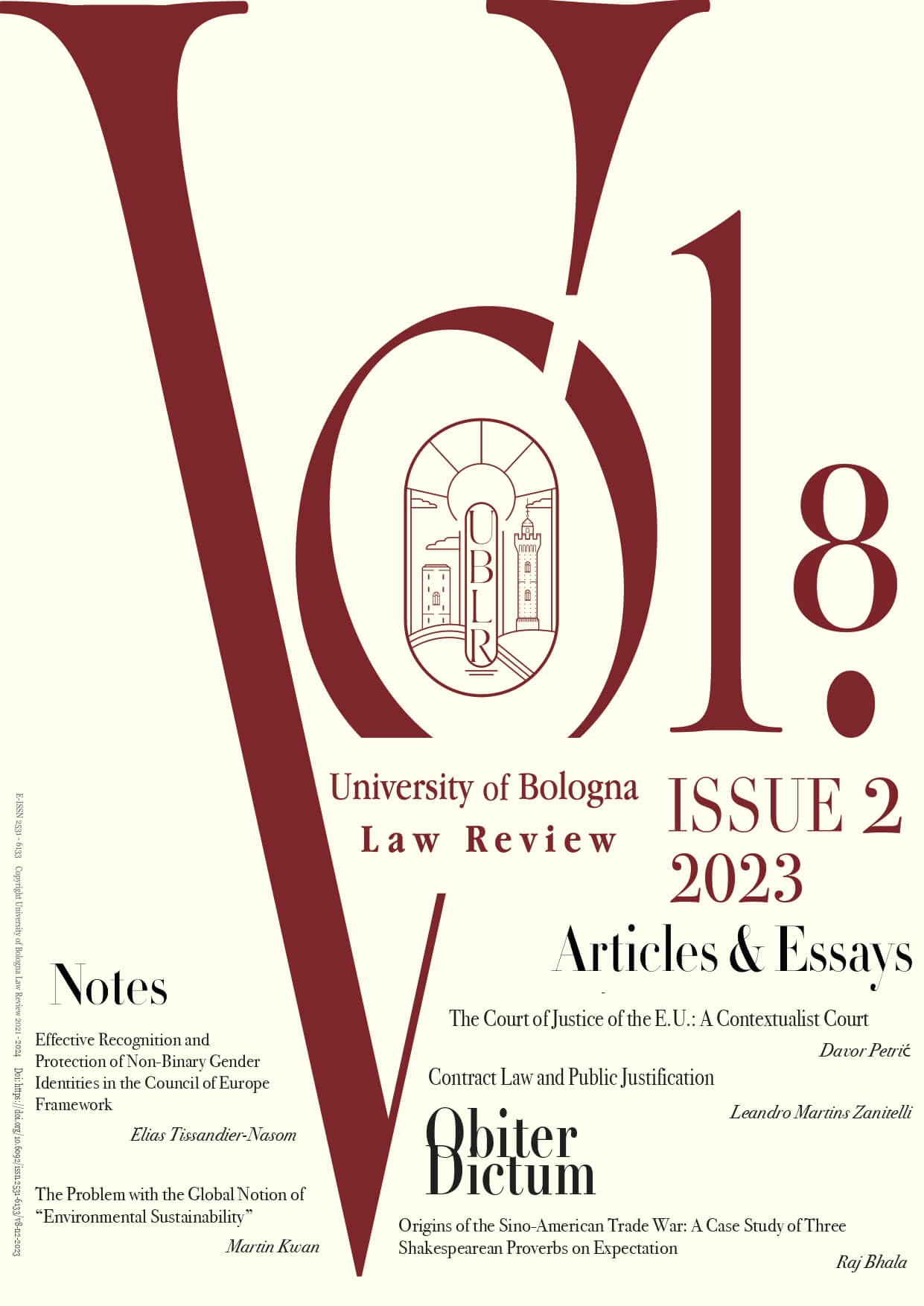Effective Recognition and Protection of Non‐Binary Gender Identities in the Council of Europe Framework
A Critical Analysis of Third Gender Marker Options From a Human Rights Law Standpoint
DOI:
https://doi.org/10.6092/issn.2531-6133/18945Keywords:
Non-binary, Transgender, Legal Gender Recognition, LGBTQ , Human RightsAbstract
Non-Binary gender identity is slowly growing in visibility across the globe. In at least seven Member States of the Council of Europe, some judicial, administrative or legislative bodies have already started organising a form of legal recognition for gender identities outside of the binary through the creation of ”third” gender categories and “X” gender markers. This trend is growing fast and the European Court of Human Rights should pronounce itself soon on a potential positive obligation to organize such recognition in the case of Y v. France (pending). In this context, this research reflects on the foundations and flaws of the organisation of gender registration in the Council of Europe Member States. The main focus in this sense is put on the human rights law framework of the Council of Europe and specifically the right to respect for private life (Article 8 of the European Convention on Human Rights (E.C.H.R.)), the prohibition of inhuman and degrading treatment (Article 3 E.C.H.R.) and the freedom of expression (Article 10 E.C.H.R.) in light of the prohibition of discrimination (Article 14 E.C.H.R.). Furthermore, it reflects critically on the recent legal developments that led to the use of “X” gender markers to highlight their inadequacy. In doing so, it points towards the possible abolition of gender registration – or at the very least its suppression from identity documents.
Downloads
Downloads
Published
How to Cite
Issue
Section
License
Copyright (c) 2023 Elias Tissandier-Nasom

This work is licensed under a Creative Commons Attribution 4.0 International License.








